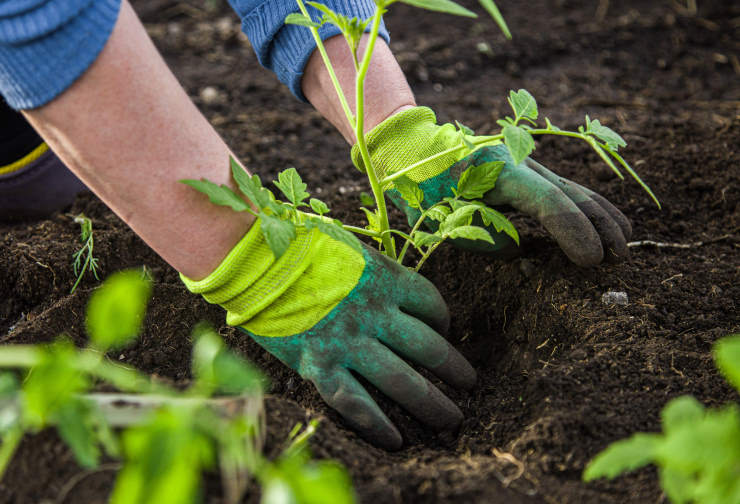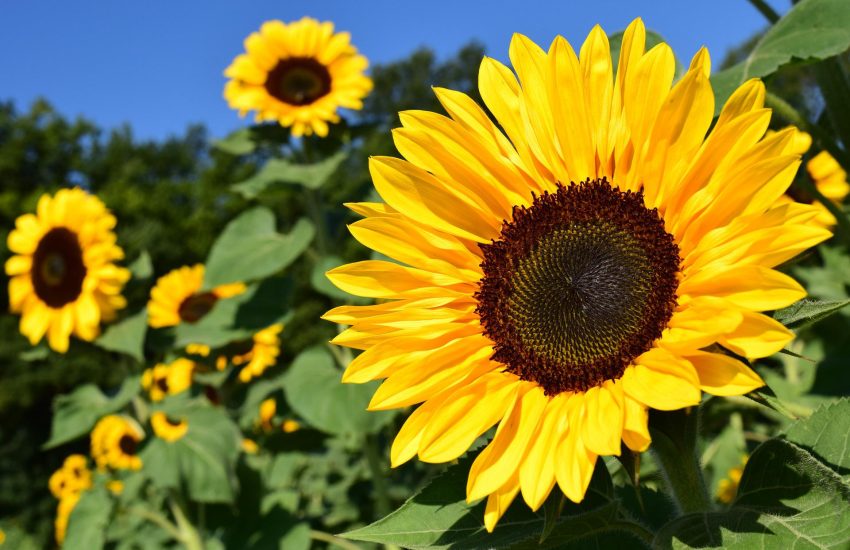Replacing Lawn with Wildflowers for a Sustainable and Low-Maintenance Garden
Swapping out a traditional lawn for wildflowers can honestly change the whole vibe of your yard. Suddenly, it’s alive—colorful, buzzing, and you barely have to fuss over it.
You’ll use less water, skip most of the mowing, and say goodbye to chemical sprays. Wildflower lawns are a sustainable alternative that genuinely help the environment—and, honestly, they make life easier for you too.
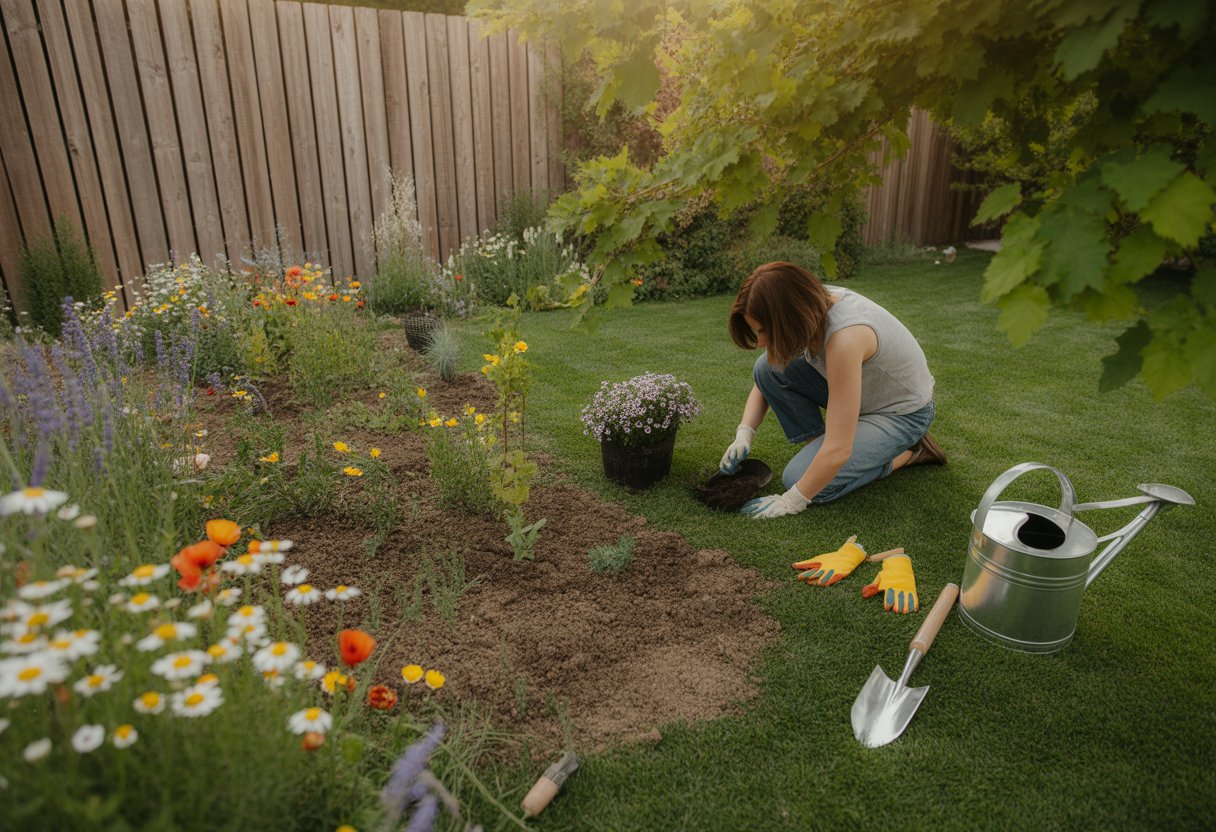
If you’re tired of battling weeds and bare spots, wildflowers are a relief. Once they settle in, they mostly take care of themselves.
A lot of folks don’t realize how simple it is to work wildflowers into the landscape they already have. With a bit of planning and the right seeds, your wildflower patch can become a lasting, ecological win.
Benefits of Replacing Lawn With Wildflowers
Switching to wildflowers brings both environmental and practical perks. You encourage more life in your yard, cut down on resource use, and build supportive habitats for all sorts of creatures.
Boosting Biodiversity
Wildflower meadows have a mix of native plant species, not just one kind of grass. That variety attracts insects, birds, and even small mammals.
The mix of plants keeps the soil healthy by feeding good microbes and holding pests in check. A wildflower landscape just feels more balanced and steady, especially when weather or pests get weird.
Water Conservation Advantages
Wildflowers don’t need as much water as manicured grass. Their roots dive deep, so the soil holds onto water better and you get less runoff.
If you live somewhere dry, this is a big deal. Wildflower meadows often get by on rain alone, which is kinder to your water bill and the local supply.
Supporting Pollinators and Wildlife
Bees, butterflies, and hummingbirds love wildflowers—they’re like all-you-can-eat buffets for pollinators. The flowers keep these helpful bugs around all season.
A wildflower patch turns your yard into a mini wildlife corridor, right in the middle of suburbia. It’s a small but real way to help pollinators and spot more birds or butterflies flitting through.
Planning Your Wildflower Lawn Conversion
Turning your lawn into a wildflower haven takes some thought. You’ll want to consider which plants fit your space, what the soil and sun are like, and when everything blooms.
Choosing Native Species
Go with native plants for the best shot at success. They already know your local weather and soil, so they need less water and fuss.
Mix in perennials, annuals, and native grasses for a diverse patch that supports pollinators. Perennials come back year after year, so you don’t have to replant.
Annuals add splashes of color and fill in the gaps. Native grasses help hold the soil and give a natural border.
Regional plant guides can help you figure out what fits your area. Definitely steer clear of invasive or non-native plants—they tend to make a mess of things.
Assessing Site Conditions
Check your soil, drainage, sunlight, and what’s already growing before you plant. Wildflowers like well-drained soil, but different species have their own quirks.
Test the soil pH—most natives like it neutral or a bit acidic. Sunlight matters too; most wildflowers want at least six hours, but some are fine with less.
Clear out existing grass and weeds so your seeds don’t have to fight for space. Notice if any spots get soggy or stay dry, and plan your planting accordingly.
Designing for Year-Round Color
Try to pick plants that bloom from early spring right into fall. Start with early bloomers like violets, then bring in mid-summer stars like coneflowers and bee balm.
Add late bloomers—think asters and goldenrod—for autumn color. Native grasses keep things interesting even when the flowers fade.
If you’re a planner, sketch out a rough chart of when things bloom. It helps keep your yard lively and gives pollinators something to snack on all season.
Steps for Planting and Establishment
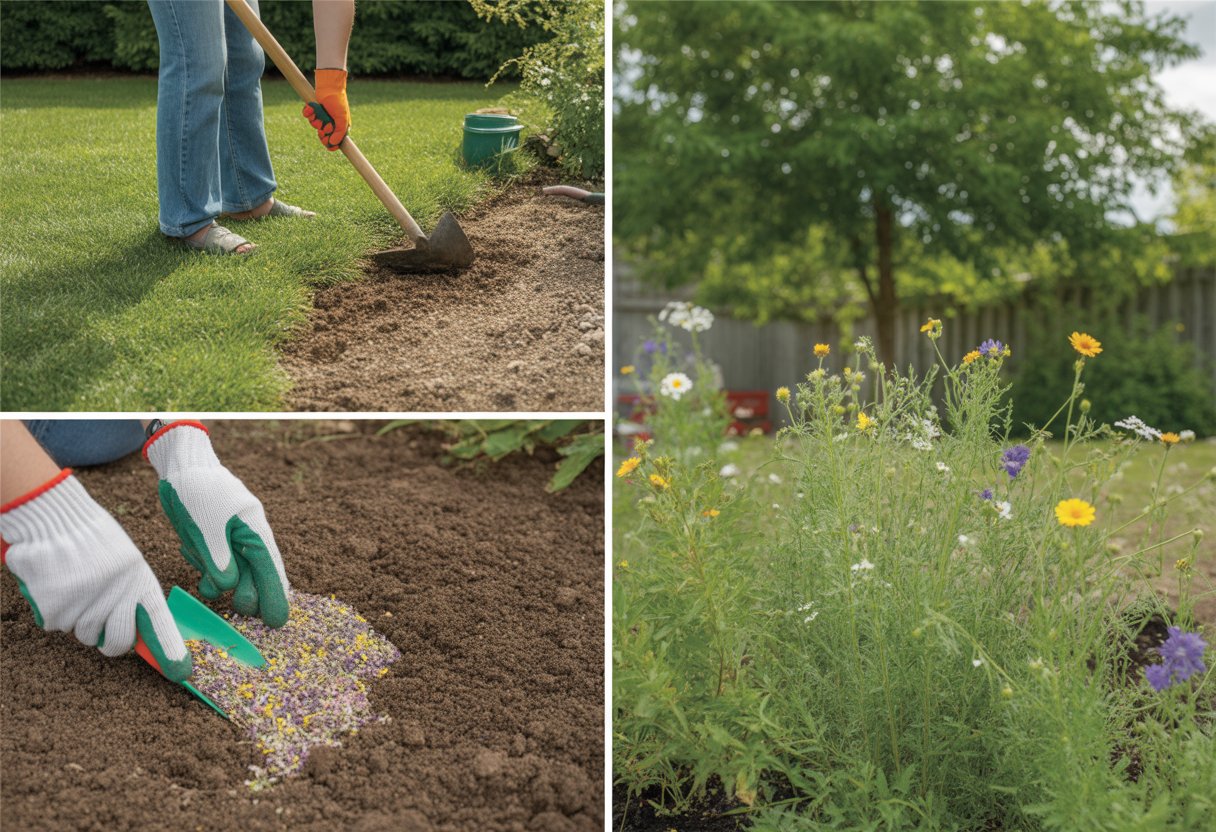
Getting wildflowers started takes some prep, a good seed mix, and a little patience with watering. It’s not complicated, but a few key steps make a big difference.
Preparing the Site
Start by getting rid of grass, weeds, and anything else that’ll compete with your seeds. Mow low, till the soil, or use an herbicide a couple weeks before planting.
Loosen the soil about 2-3 inches deep so seeds can settle in. Skip the fertilizer—wildflowers honestly prefer poor soil.
Make sure the spot gets plenty of sun (at least six hours if you can). If there are big rocks or junk in the way, clear them out so seeds spread evenly.
Seeding Methods
Pick a seed mix that fits your climate and soil. Mixing seeds with sand helps you spread them more evenly.
Scatter the seeds by hand or with a spreader, then lightly rake so they’re just under the surface—don’t bury them too deep. Most wildflowers need light to sprout.
Gently press down the soil with a roller or just walk over it in flat shoes. Good seed-to-soil contact is key. Early spring or fall is usually the best time to sow, depending on your chosen species.
Watering and Fertilizing Guidelines
After seeding, water gently every day or two to keep things moist but not soggy. A fine spray works best—otherwise, you might wash the seeds away.
Once the plants start growing, back off on watering so their roots dig deep. Too much water can cause problems with rot or fungus.
Skip the fertilizer unless your soil is really poor. If you must, use a balanced, low-nitrogen mix and go easy—just for the first season.
Maintaining a Wildflower Meadow
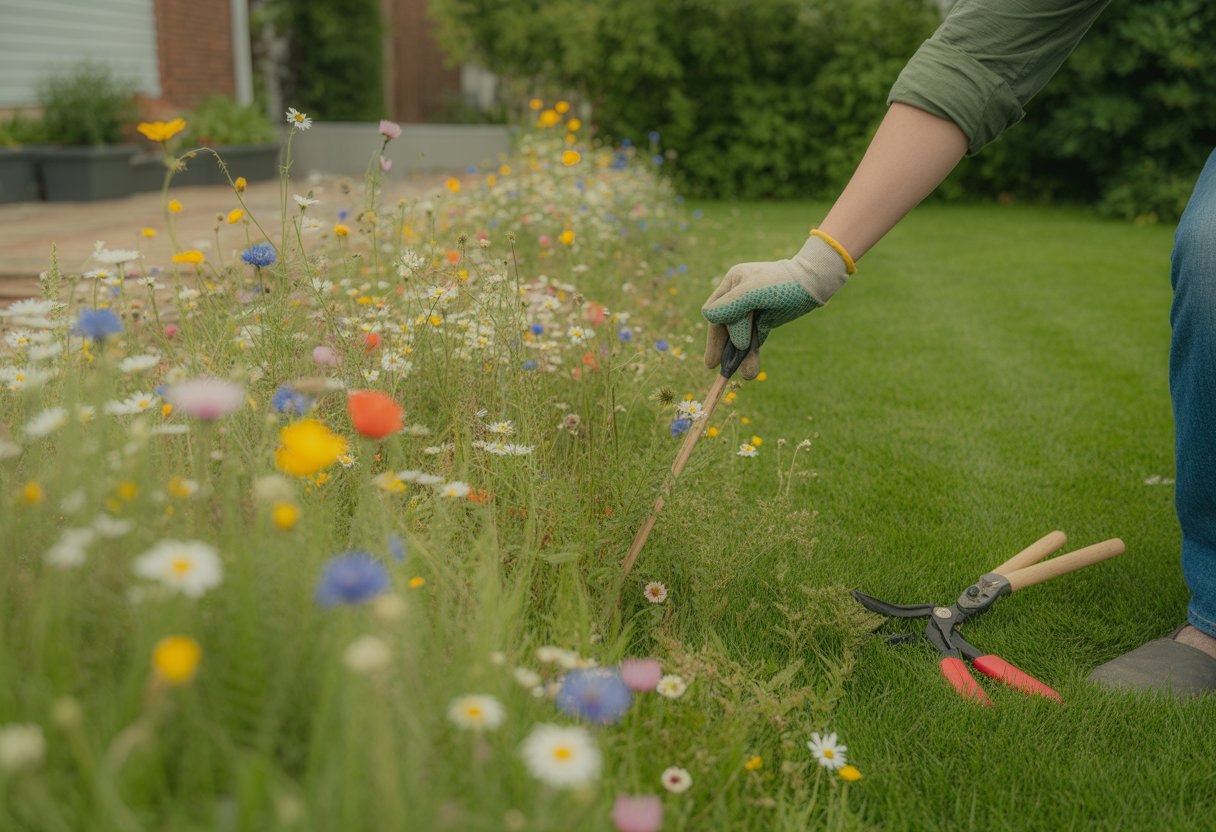
Wildflower meadows aren’t totally hands-off, but they’re much less work than a lawn. You’ll need to keep weeds in check and mow at the right times.
Managing Weeds
Weeds will try to sneak in and steal resources, so keep an eye out. Pull invaders like crabgrass or bindweed by hand if you spot them early.
If weeds get out of control, you might have to use selective herbicides made for wildflower areas. Avoid anything broad-spectrum—native plants are sensitive. Catch weeds before they go to seed, and mulch around young wildflowers to help block them.
Mowing Techniques
Mowing helps keep woody plants from taking over and encourages more flowers. Aim to mow once or twice a year—late summer or early fall, after seeds have dropped, is usually best.
Set the mower high (6-8 inches) to protect grasses and roots. Rake up the cuttings so the soil doesn’t get too rich.
Skip mowing when it’s wet to avoid compacting the soil. In smaller spaces, a scythe or string trimmer gives you more control and feels oddly satisfying, if you’re into that sort of thing.
Seasonal Weeding Best Practices
Spring and early summer are key times for controlling weeds before wildflowers fully emerge. Focus on pulling out fast-growing invasive plants early to keep them from taking over.
Try shallow hoeing or hand weeding—it’s better for the soil and less disruptive. In fall, check for late-season weeds and snip off their seed heads to cut down on next year’s growth.
Watch spots where native grass spreads too much and trim them so wildflowers still get light. Sticking with regular, seasonal weeding keeps the meadow looking good and helps everything thrive.

